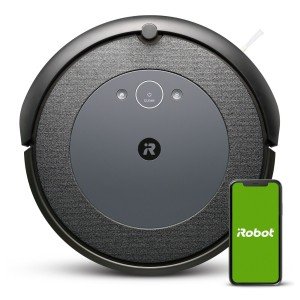Robotic Vacuum Cleaner Comparison: The Future of Home Cleaning
In current years, robotic vacuum have transformed the way we maintain cleanliness in our homes. With developments in innovation and the incorporation of synthetic intelligence, these devices have actually evolved from simple novelty products to essential family home appliances. This post offers an extensive comparison of a few of the leading robotic vacuum on the market, assisting customers make notified decisions when selecting a model that fits their needs.
Understanding Robotic Vacuum Cleaners
Robotic vacuum are autonomous machines created to clean floorings instantly. Geared up with sensing units, they browse around challenges and change their cleaning paths for optimal performance. The key functions that distinguish various designs consist of suction power, battery life, app connectivity, navigation technology, and price.
Key Features to Consider
When comparing robotic vacuum cleaners, potential purchasers must take into consideration the following elements:
- Suction Power: Measured in Pascals (Pa), suction power figures out the efficiency of choosing up dirt and particles.
- Battery Life: The length of time a vacuum can operate before needing a recharge substantially impacts its cleaning efficiency.
- Navigation Technology: Models may use basic random navigation or advanced mapping technologies (like LIDAR) that enable them to create a map of the home.
- Smart Features: Connectivity to smartphone apps or smart home systems can improve use and control.
- Filter Type: HEPA filters are recommended for allergy sufferers, as they trap irritants and improve air quality.
Comparison of Top Robotic Vacuum Cleaners
Below is a comparison table of some of the very best robotic vacuum cleaners offered in 2023:
| Model | Suction Power (Pa) | Battery Life (minutes) | Navigation Technology | Smart Features | Price (GBP) |
|---|---|---|---|---|---|
| iRobot Roomba i7+ | 1700 | 75 | Smart mapping | App control, voice command | ₤ 949 |
| Roborock S7 | 2500 | 180 | LIDAR | App control, multi-floor | ₤ 649 |
| Neato D7 | 2000 | 120 | LIDAR | App control, zone cleaning | ₤ 599 |
| Ecovacs Deebot T10 | 3000 | 150 | Smart mapping | App control, room detection | ₤ 799 |
| Shark IQ Robot | 1200 | 90 | Random | App control, self-emptying | ₤ 399 |
Description of the Table
- iRobot Roomba i7+: Known for its robust cleaning ability, it includes smart mapping technology that allows it to designate particular areas for cleaning. Its self-emptying feature is a plus for benefit.
- Roborock S7: This design masters suction power and battery life, making it perfect for bigger homes. Its LIDAR innovation helps develop an efficient cleaning course, and it can vacuum and mop at the same time.
- Neato D7: The D-shape style permits much better corner cleaning, and it features strong suction power. Its LIDAR navigation allows it to map out cleaning areas precisely.
- Ecovacs Deebot T10: Boasting the highest suction power and advanced navigation, this model can deal with multiple floorings successfully. It's a versatile choice for families with differing floor types.
- Shark IQ Robot: A budget-friendly alternative that still provides smart functions. Its self-emptying capability and app integration make it a practical option for those searching for a solid cleaning buddy without breaking the bank.
Advantages of Robotic Vacuum Cleaners
Robotic vacuum cleaners use various benefits that add to their increasing appeal among customers:
- Time-Saving: Automated cleaning permits users to free up important time that can be invested in other activities.
- Convenience: Many designs can be arranged by means of apps to clean up at particular times, reducing manual effort.
- Accessibility: They can reach under furniture and in tight areas where standard vacuums may have a hard time.
- Daily Maintenance: Regular usage of robotic vacuums can assist maintain a consistently tidy environment, promoting much better general home health.
FAQs About Robotic Vacuum Cleaners
1. How frequently should I run my robotic vacuum?
It is recommended to run the robotic vacuum a minimum of 2-3 times a week to maintain cleanliness, though everyday use can be helpful, particularly in homes with pets or high foot traffic.
2. Do robotic vacuums work on carpets?
Yes, lots of robotic vacuums are designed to work on carpets, but efficiency may vary based on the model's suction power and brush type. Try to find designs particularly pointed out as reliable for carpets.
3. Can robotic vacuums clean family pet hair?
Most robotic vacuums can efficiently get pet hair, but those with strong suction and tangle-free brush designs are especially appropriate for this task.
4. How do I keep my robotic vacuum?
Routine upkeep consists of cleaning the brushes and sensing units, emptying the dustbin, and periodically changing filters to make sure optimum performance.
5. Are visit my web site ?
While they tend to be more pricey than standard vacuums, the convenience, performance, and time-saving elements make them a deserving investment for many families.
The market for robotic vacuum cleaners continues to broaden as innovation develops, using consumers a range of choices to match various cleaning requirements and budget plans. By thoroughly considering features such as suction power, battery life, and smart abilities, users can pick a model that lines up with their lifestyle. Whether for benefit, ease of usage, or exceptional cleaning efficiency, robotic vacuums are certainly reshaping the future of home cleaning.

